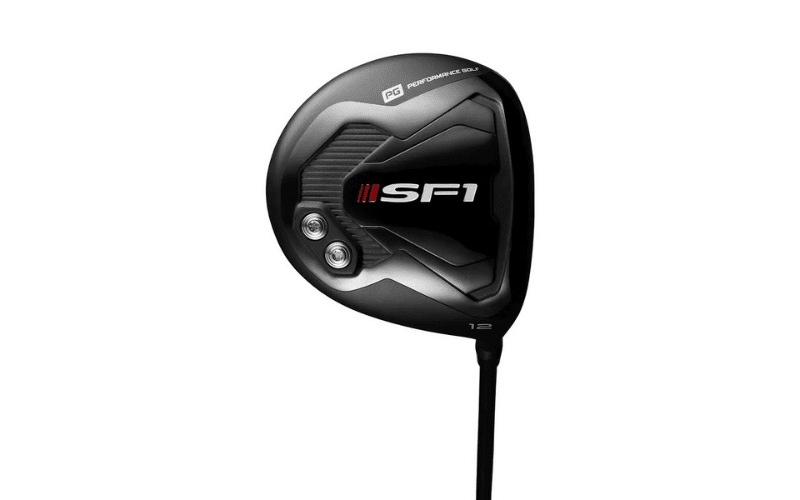Key Takeaways
- Regular cleaning of your SF1 golf driver enhances performance by ensuring cleaner shots.
- Proper maintenance extends the life and resale value of your golf clubs.
- Use soft-bristled brushes and microfiber towels to avoid scratching the driver.
- A gentle soap solution is effective for removing dirt and debris from the clubface.
- Regularly inspect and clean the grip and shaft for optimal control and longevity.
Why Cleaning and Maintenance Matter for Your SF1 Golf Driver
Every golfer knows that maintaining their equipment is just as crucial as perfecting their swing. Your SF1 golf driver is no exception. Keeping it clean not only improves its performance but also extends its lifespan. Most importantly, a well-maintained driver can significantly impact your game, providing you with consistency and reliability on the course.
Impact of Clean Drivers on Performance
Imagine stepping onto the green, your SF1 driver gleaming in the sunlight. A clean clubface ensures better contact with the ball, which translates to more accurate shots. Dirt and grime can accumulate in the grooves of the driver, affecting the ball's spin and trajectory. Therefore, regular cleaning is essential to maintain the precision and power of your swings.
Besides that, clean drivers reduce the risk of damage to the clubhead. Scratches and nicks can alter the aerodynamics of the driver, affecting the distance and direction of your shots. By keeping your driver in pristine condition, you're not only protecting your investment but also enhancing your performance on the course.
Longevity and Resale Value of Well-Maintained Clubs
Let's face it; golf clubs aren't cheap. Maintaining your SF1 driver isn't just about improving your game; it's also about preserving the value of your equipment. A well-cared-for driver can last for years, providing you with countless rounds of enjoyable play. Moreover, should you decide to upgrade or change your equipment, a driver in excellent condition will fetch a better resale price.
Regular cleaning and maintenance can prevent issues such as rust, corrosion, and wear. These problems not only affect the club's performance but also its aesthetic appeal. By investing a little time in caring for your driver, you're ensuring that it remains a valuable asset in your golf bag. For more detailed guidance, check out our SF1 Golf Driver FAQ.
Essential Tools and Materials
Now that we've established the importance of cleaning your SF1 golf driver, let's talk about the tools and materials you'll need. Choosing the right supplies is crucial to ensure that you clean your driver effectively without causing any damage. For more insights on maintaining your driver, check out the seasonal performance of the SF1 golf driver.
Choosing the Right Cleaning Supplies
When it comes to cleaning your SF1 driver, simplicity is key. You don't need fancy or expensive products. A mild dish soap, warm water, and a few household items are all you need. Avoid harsh chemicals or abrasive cleaners, as these can damage the finish of your club.
Importance of Using Soft-Bristled Brushes
One of the most important tools in your cleaning arsenal is a soft-bristled brush. A brush with soft bristles will effectively remove dirt and debris from the clubface without scratching or damaging the surface. Be gentle when scrubbing, as excessive force can cause unnecessary wear. For more tips on maintaining your golf equipment, check out our interactive FAQ on SF1 Golf Driver.
Recommended Cloths and Towels
Microfiber towels are ideal for drying and polishing your SF1 driver. They are soft, absorbent, and won't leave lint behind. After cleaning, use a microfiber towel to thoroughly dry the club, ensuring no moisture remains that could lead to rust or corrosion.
Step-by-Step Cleaning Process for SF1 Driver Head
With your tools and materials ready, it's time to dive into the cleaning process. Follow these steps to ensure your SF1 driver remains in top condition.
First, fill a bowl with warm water and add a small amount of mild dish soap. Mix until the soap is dissolved, creating a gentle cleaning solution. This solution will help break down any dirt or grime on the clubhead.
Preparing a Cleaning Solution
Start by preparing a cleaning solution that is both effective and gentle on your SF1 driver. Fill a bowl with warm water and add a teaspoon of mild dish soap. Mix the solution until the soap is completely dissolved. This simple mixture will help break down any dirt or grime without harming the finish of your club.
It's important to use warm water because it helps to loosen dirt more effectively than cold water. However, avoid using hot water as it may damage the adhesive used in the club's construction. Stick to lukewarm temperatures to ensure the safety of your equipment. For more details on maintaining your equipment, check out our interactive FAQ on SF1 golf drivers.
Once your solution is ready, you're set to begin the cleaning process. Remember, the goal is to gently remove dirt and debris without causing any scratches or damage to the clubhead.
Removing Dirt and Debris from the Clubface
Dip a soft-bristled brush into the cleaning solution and gently scrub the clubface. Focus on the grooves where dirt tends to accumulate. The grooves play a crucial role in controlling the ball's spin, so keeping them clean is essential for optimal performance.
Be thorough but gentle. Apply light pressure as you scrub to avoid scratching the surface. If you encounter stubborn dirt, let the brush do the work. Avoid using your fingernails or any sharp objects that could damage the finish. For more tips on keeping your equipment in top shape, check out our SF1 Golf Driver FAQ.
Ensuring a Scratch-Free Clean
After scrubbing, rinse the clubhead with clean water to remove any soap residue. Make sure to hold the clubhead downward to prevent water from entering the shaft. This simple precaution helps avoid any potential damage to the internal components of the driver.
Once rinsed, use a microfiber towel to gently pat the clubhead dry. Microfiber is ideal because it absorbs moisture quickly and won't leave any lint behind. Ensure the clubhead is completely dry before moving on to the next step.
Finally, inspect the clubface for any remaining dirt or smudges. If necessary, repeat the cleaning process until the clubface is spotless. A clean clubface not only looks great but also ensures consistent performance on the course. For more detailed instructions, check out this guide on how to clean and care for your golf clubs.
Maintaining the Shaft and Grip
While the clubhead often gets the most attention, it's important not to overlook the shaft and grip. Proper maintenance of these components is crucial for maintaining control and comfort during your swing.
The shaft can accumulate dirt and oils from your hands, which can lead to corrosion over time. Regular cleaning will help prevent this and keep your driver looking and performing its best. For more information on maintaining your equipment, check out our interactive FAQ about the SF1 Golf Driver.
Similarly, the grip is where you connect with the club, so keeping it clean ensures a secure hold and optimal control. Let's dive into the best practices for maintaining these vital parts of your SF1 driver.
"A clean grip ensures a secure hold and optimal control, enhancing your overall performance on the course."
Proper Ways to Clean the Shaft
To clean the shaft, use a damp cloth soaked in the same cleaning solution used for the clubhead. Gently wipe down the entire length of the shaft, paying special attention to any areas that appear particularly dirty or oily.
After cleaning, use a dry microfiber towel to thoroughly dry the shaft. This prevents any moisture from causing rust or corrosion. Regular inspection and cleaning will help keep your shaft in top condition, ensuring it remains a reliable part of your golf arsenal.
Cleaning and Maintaining the Grip for Better Control
The grip can easily become slippery and less effective if not maintained properly. To clean it, use a damp cloth with a small amount of soap, gently rubbing the grip to remove any dirt or oils. Avoid soaking the grip, as excessive moisture can damage the material.
Once clean, dry the grip with a towel and allow it to air dry completely before using the club. A clean grip not only feels better in your hands but also provides the confidence needed for a strong, controlled swing.
Avoiding Common Mistakes
One common mistake golfers make is using harsh chemicals or abrasive materials when cleaning their clubs. These can cause damage and diminish the lifespan of your equipment. Stick to gentle cleaning solutions and soft materials to protect your investment.
Another mistake is neglecting regular maintenance. Cleaning your driver should be part of your routine, not something done only when dirt is visible. Regular upkeep ensures your driver performs at its best every time you step onto the course.
"Regular upkeep ensures your driver performs at its best every time you step onto the course. For more information, check out our SF1 Golf Driver FAQ."
Lastly, avoid storing your driver in damp or humid environments. Moisture can lead to rust and other damage. Instead, store it in a dry, cool place to preserve its condition and performance.
Best Practices for Long-Term Maintenance
Establishing a routine for cleaning and maintenance is key to keeping your SF1 driver in optimal condition. By following a few simple best practices, you can extend the life of your club and ensure it remains a reliable tool in your golf bag.
Consider these tips as a guide to maintaining your driver over the long term. With consistent care, your SF1 driver will continue to deliver outstanding performance round after round.
Setting a Regular Cleaning Schedule
Set a regular schedule for cleaning your driver. Whether it's after every round or once a month, consistency is key. Regular cleaning prevents dirt and grime from building up, ensuring your driver is always ready for action.
Protecting Your Driver During Transport
Transporting your SF1 golf driver requires special attention to avoid damage. Whether you're heading to a local course or traveling for a tournament, ensuring your driver is safe during transit is crucial. Always use a golf bag with a protective cover. The cover helps shield your driver from bumps and knocks that can occur during travel.
Additionally, consider using a travel case with a hard shell for added protection. These cases are designed to withstand rough handling, keeping your clubs secure. Remember, protecting your driver during transport not only preserves its condition but also ensures you're ready to play your best game upon arrival. For more tips on optimizing your performance, check out the seasonal performance of the SF1 golf driver.
Storing SF1 Driver Correctly
Proper storage is another important aspect of maintaining your SF1 driver. Always store your driver in a cool, dry place. Avoid areas with high humidity or extreme temperatures, as these conditions can lead to rust and other damage. A golf bag with individual dividers for each club is ideal for preventing scratches and keeping your driver secure. For more tips, check out how to clean and care for your golf clubs.
It's also a good idea to regularly inspect your storage area for any signs of moisture or pests. Taking these precautions will help maintain the quality and performance of your driver over time. For more tips on maintaining your golf equipment, check out our guide on SF1 Golf Driver FAQs.
Frequently Asked Questions
Many golfers have questions about the best practices for cleaning and maintaining their SF1 drivers. Here, I'll address some of the most common concerns to help you keep your equipment in top shape.
Remember, a well-maintained driver not only improves your game but also extends the life of your club. Let's dive into these frequently asked questions and provide some clarity on the subject.
- How often should I clean my SF1 driver?
- What cleaning solutions are safe for my golf driver?
- Can I use a metal brush on my SF1 driver?
- How do I know if my SF1 driver needs replacement?
- What's the best way to protect my driver during travel?
How often should I clean my SF1 driver?
I recommend cleaning your SF1 driver after every round of golf. Regular cleaning prevents dirt and debris from building up, ensuring optimal performance. If you're unable to clean it after each round, aim for at least once a month to maintain its condition.
By keeping a consistent cleaning schedule, you'll ensure your driver remains in top shape, ready to deliver precise and powerful shots every time you play.
What cleaning solutions are safe for my golf driver?
Stick to mild dish soap and warm water for cleaning your SF1 driver. This simple solution is effective at removing dirt and grime without damaging the club's finish. Avoid harsh chemicals or abrasive cleaners, as they can cause harm to your driver.
Using a gentle cleaning solution ensures that your driver remains in excellent condition, preserving its appearance and performance for years to come.
Can I use a metal brush on my SF1 driver?
No, I strongly advise against using a metal brush on your SF1 driver. Metal brushes can scratch and damage the surface of the club, affecting its performance and appearance. Instead, opt for a soft-bristled brush to gently clean the clubface and grooves.
By using the right tools, you'll protect your driver from unnecessary wear and tear, keeping it in pristine condition.
How do I know if my SF1 driver needs replacement?
Look for signs of wear such as dents, cracks, or significant loss of performance. If your driver isn't performing as well as it used to, it might be time for a replacement. Regular inspections can help you catch these issues early. For more insights, check out our article on the seasonal performance of the SF1 golf driver.
Replacing your driver when needed ensures you're always playing with equipment that supports your best game. Don't hesitate to consult with a professional if you're unsure about the condition of your driver.
What's the best way to protect my driver during travel?
Use a golf bag with a protective cover and consider investing in a hard-shell travel case for added security. These precautions help shield your driver from damage during transit, ensuring it arrives in perfect condition.
By taking the necessary steps to protect your driver, you can focus on your game without worrying about potential damage during travel.


